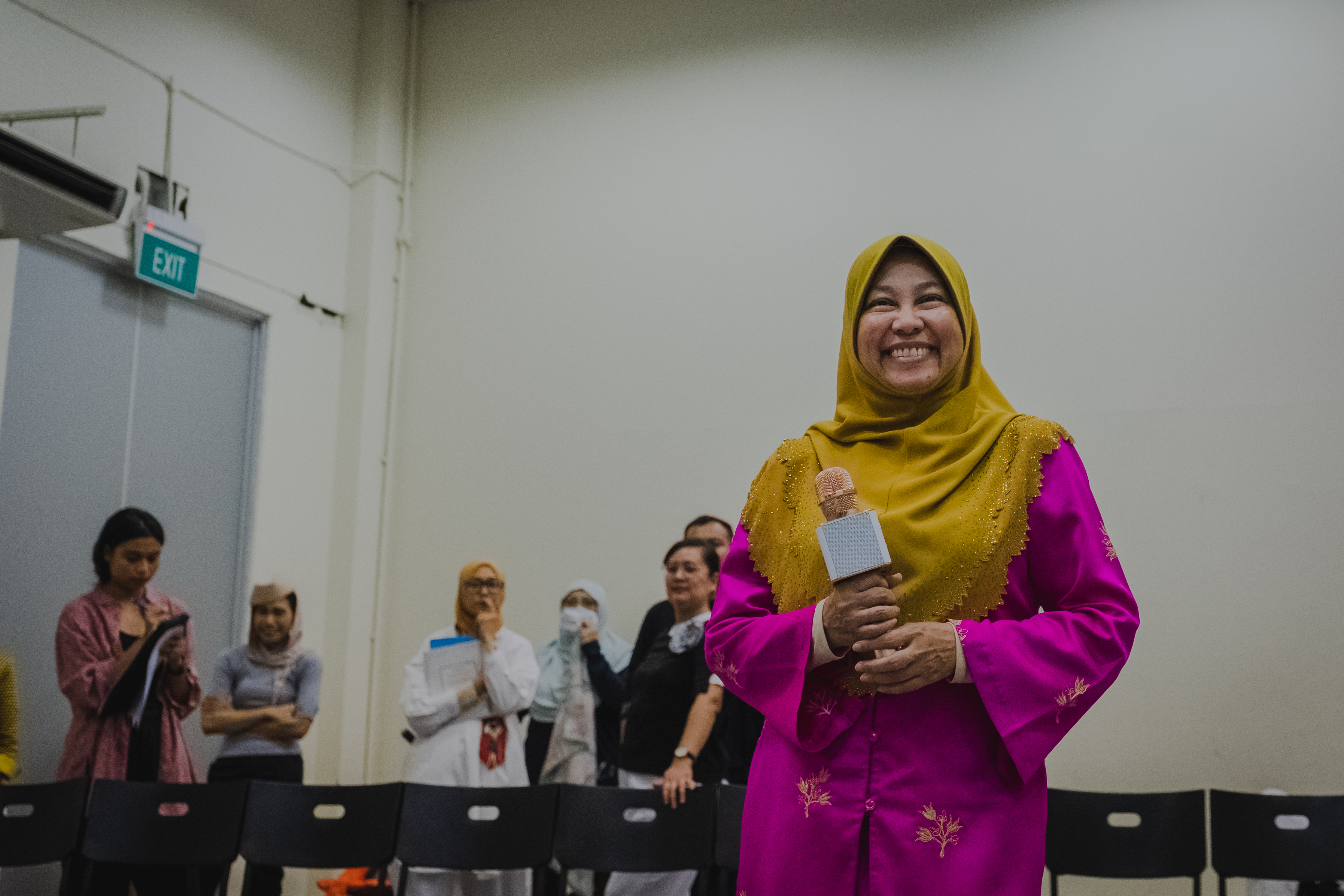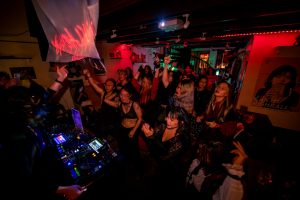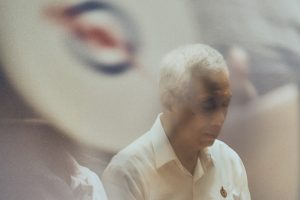They are especially stringent on the last point.
“Even if you are married, if you don’t have a child and you are not a mother, you won’t be able to join us,” Hartini Md Yusof, one of their members, sternly says.
Only after satisfying all three conditions can you be a member of Mak-Mak Menari (M3), a group of Malay-Muslim, dancing mothers. Although they are a recreational dance group, they have found success on the professional stage, performing at Esplanade’s Muara Festival the previous three years, and at community events like the official opening of Wisma Geylang Serai last January.
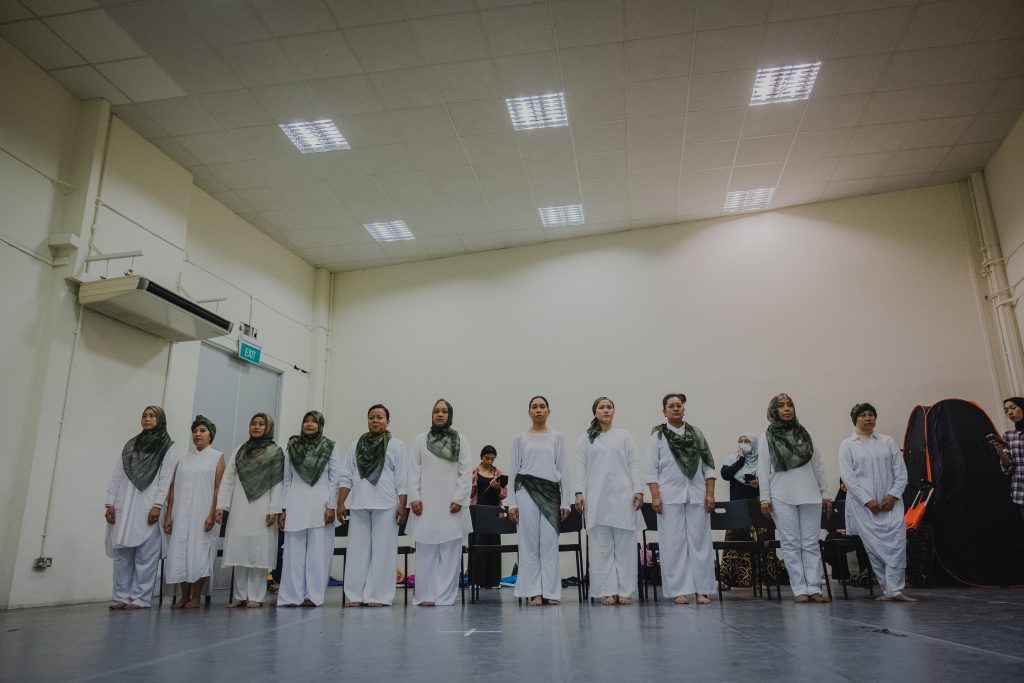
The mak-mak will be joined on stage by the decidedly non-mak mak Soultari Amin Farid (“I can’t be a mother, no matter how hard I try,” he says), an artist and researcher, who, along with Grace Lee-Khoo, is one of the co-creators of the work. (Soultari is also one of the two founders of Bhumi Collective.)
It’s far from the usual English-language theatrical play that audiences are used to. “Initially, we were concerned about who will want to watch us,” Hartini says. “But we are happy because one of our shows is already fully sold out. Which actually surprised us!” (At the time of publication, two out of four shows have been sold out.)

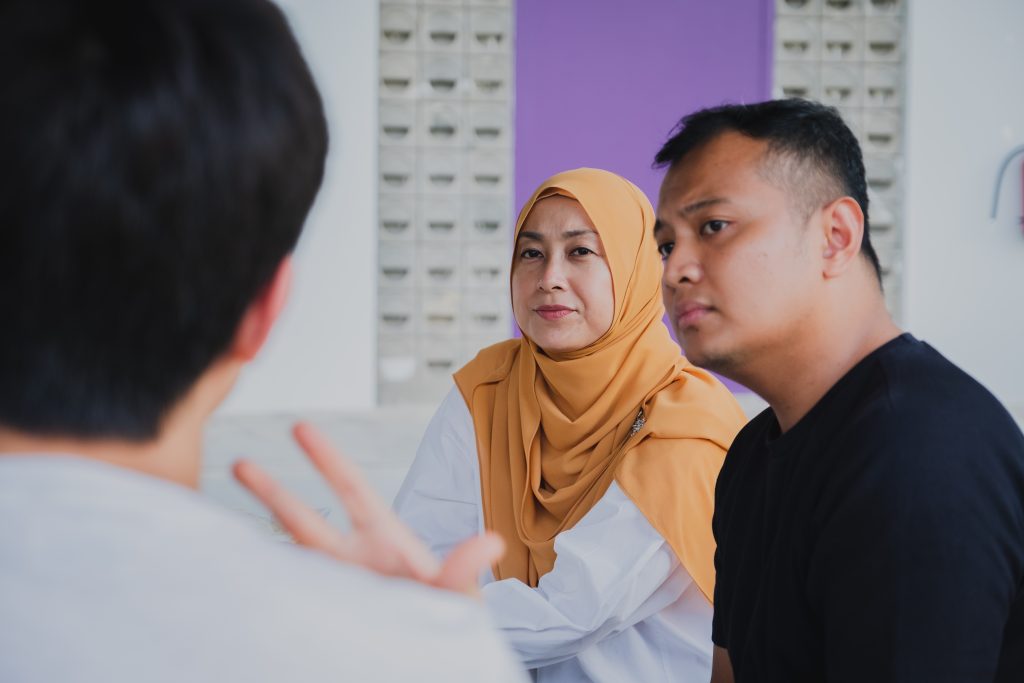
After the emphatic chorus of “yes” dies down, Hartini elaborates, “We have people asking, ‘Don’t they have better things to do at home? Who are they? Why are they wasting their time? They are married with kids, why do they still want to dance?’”
Such a stigma stems from the complex relationship between the performing arts, the figure of the mother, and religion in the Malay-Muslim community, as Soultari explains.
“If there is a hierarchy of which performing arts are acceptable to a Malay-Muslim person, dance is always one of the lowest. It’s a stigma. For example, it’s okay to see actresses, singers, who wear hijab. But people have stereotypes about dance—they may think it’s very provocative.”
“For Malay women, especially when they are married and are mothers, people think they shouldn’t be prancing on stage.”

Most importantly, each have, in their own personal way, managed to integrate their art with their religion, upholding both without compromising either.
“We do stop to pray. If we have to fast, we fast. We are dancers, but we still wear the hijab,” Hartini says vehemently.
Furthermore, the tradition of dance in Malay-Muslim culture actually has religious connections, according to Soultari.
“In Malay dance, there are symbolisms. There are flowers, leaves, wind. These natural symbolisms remind us of the beauty of God. So we understand it as such. But not everybody understands it in such a manner. “
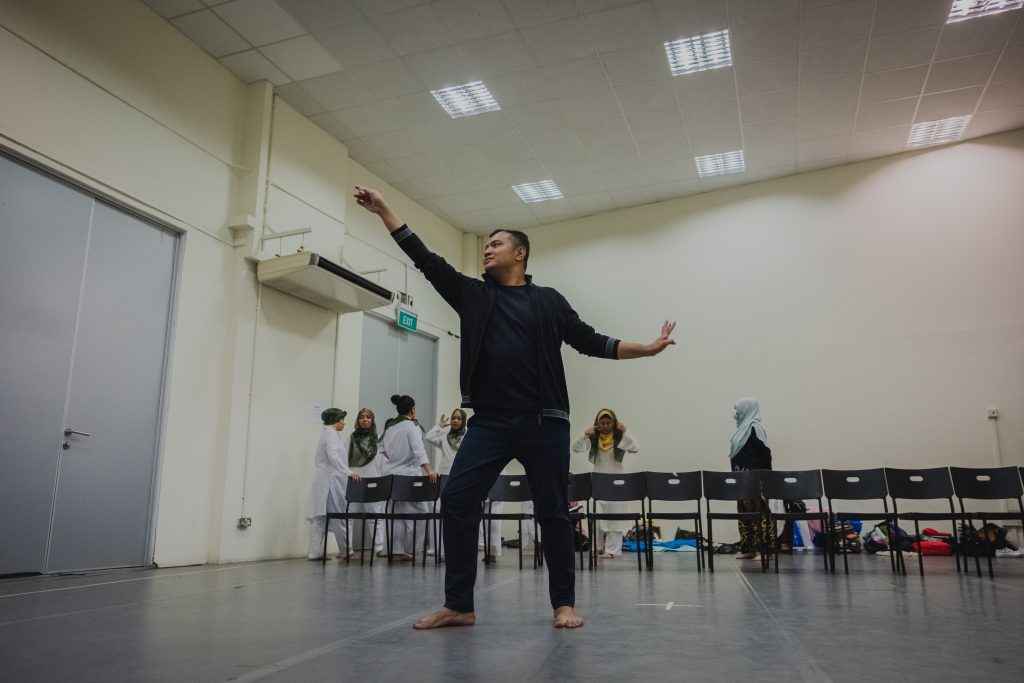
He stresses that it’s important that voices like theirs, typically silenced, are heard on stage. “When I go for shows and we’re talking about the Singapore community, we don’t see Malay or Indian or whoever goes under ‘others’. My question is which community we’re talking about here. The community that is being represented in theatre isn’t a diverse community.”
“My worry sometimes is when artists like to go, ‘It’s better for us to do post-race.’ Meaning, ‘Let’s do away with the racial categorisation.’ It might be easy for someone of a majority race to say that, but for someone from a minority race, that racial categorisation is what we hold on to so we don’t get lost in the sea of voices and drown.”
“So rather than waiting for people to cast me and my sisters [the mak-mak] into their works, I thought, why not create platforms for their stories?”
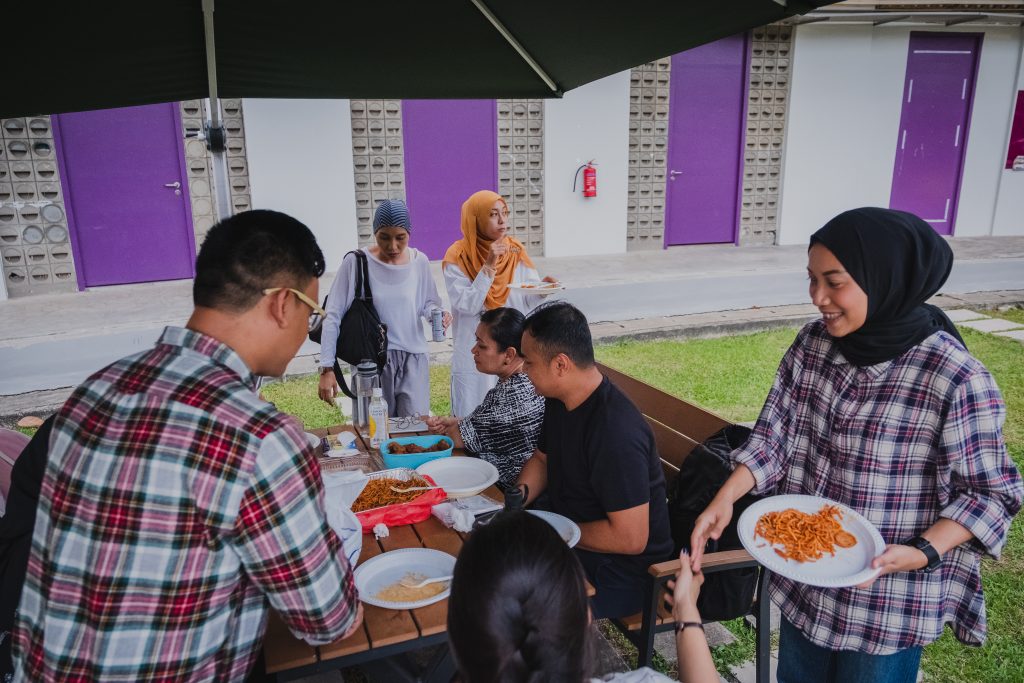
“It can also be about the levels of SES, about poverty, about ageing. We need to have renewed focus on ageing representation. That’s why M3 for me is very important. They might not like to say it—” he casts a glance around our table before continuing, “—but these are ageing bodies.”
Hartini immediately protests, “We showcase energy! Not because of our age that means we can only perform slow dance movements.”
“We do have fast tempos and beats,” Uswatun concurs.
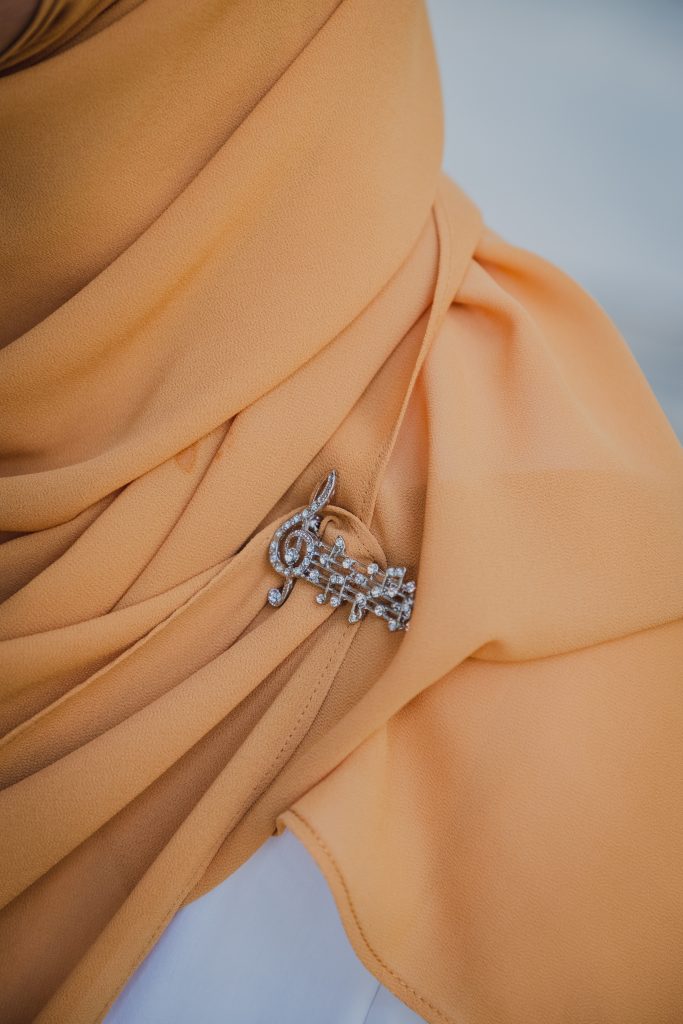
How we dismantle this hegemony is through fostering intercultural moments in theatre, according to Soultari.
“For the mak-mak [and the audience that would watch M3 normally], to go from Malay dancing into theatre, a largely English-language theatre, is an intercultural moment. For the people whom the Fringe normally caters to, it’s an intercultural moment.”
But what exactly does he mean by ‘intercultural’?
After a long pause, Soultari exclaims, “It’s like a nasi lemak burger. You’ll never have thought [that working with different cultures and creating something from it was] possible. But then it’s there.”

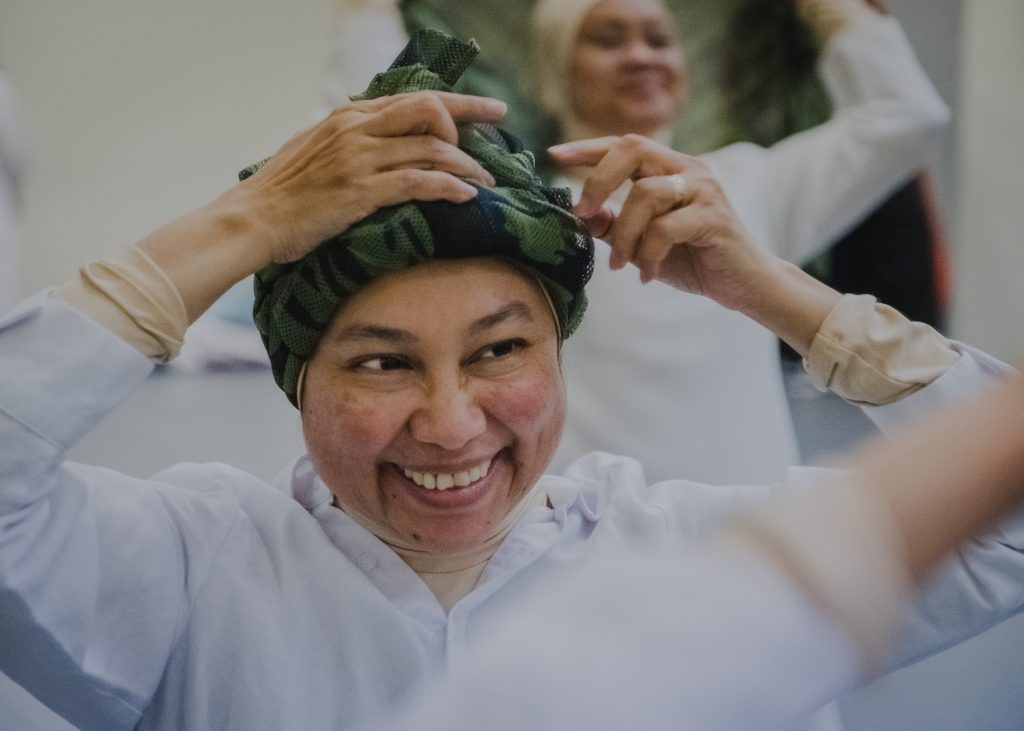
As with the nasi lemak burger, they have their detractors. But as much as the production Mak-Mak Menari is an important showcase of submerged ethnic voices, at the end of the day, M3’s mere existence is an avant-garde, transformative act. It is a celebration of a group of people who have managed to chart their own journey, inhabiting, at once, three seemingly contradictory identities: mother, Malay-Muslim, and dancer—without having to compromise on their principles or waiting for someone to carve a path for them.
As Soultari says, “Even without them having the intent to transform the scene, they are transforming it.”
Did you catch the show or anything else at the Fringe Festival? Let us know at community@ricemedia.co

